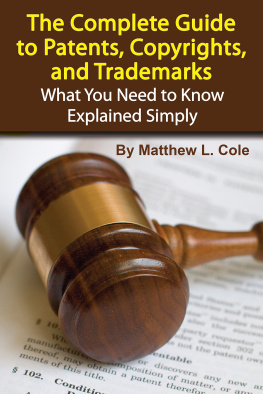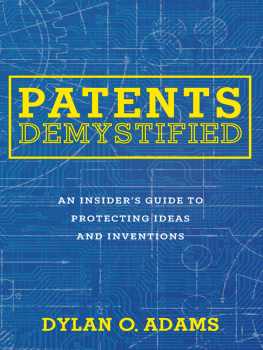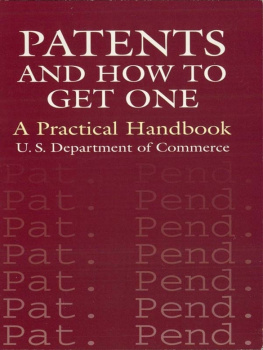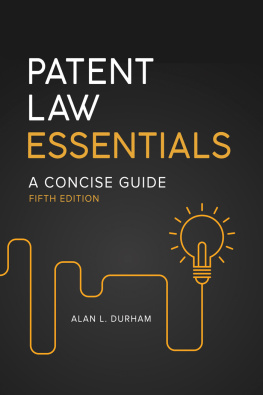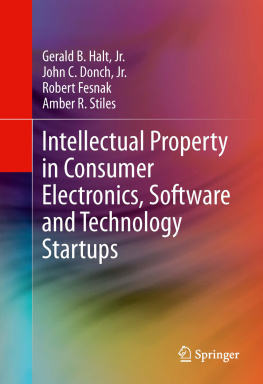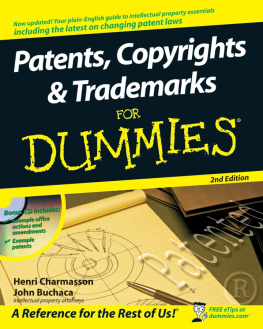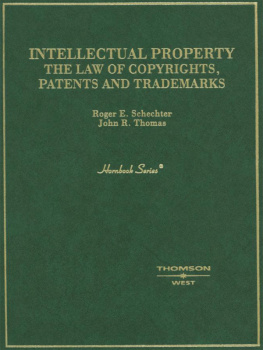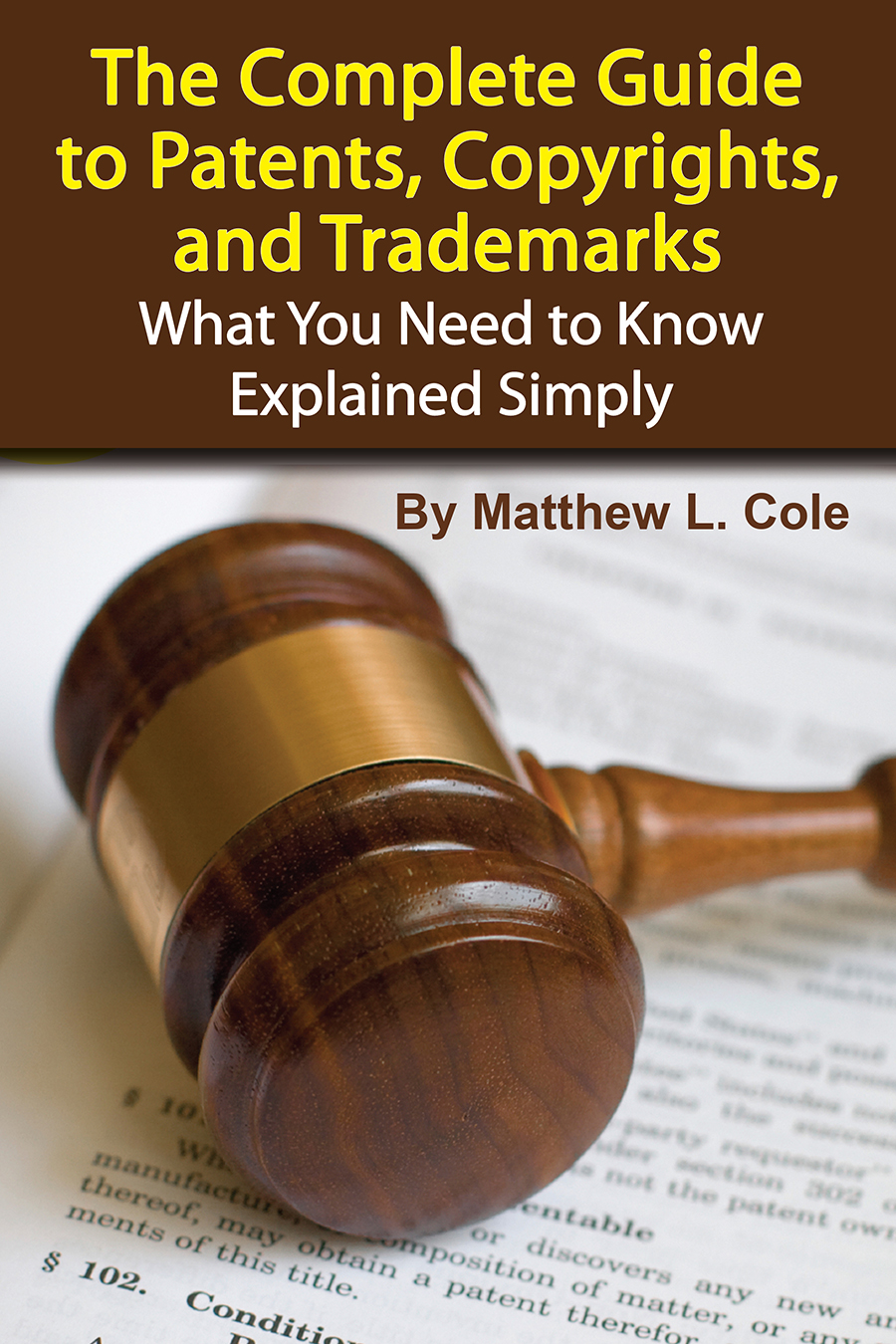The Complete Guide to Patents, Copyrights, and Trademarks
What You Need to Know Explained Simply
By Matthew L. Cole
The Complete Guide to Patents, Copyrights, and Trademarks: What You Need to Know Explained Simply
Copyright 2008 by Atlantic Publishing Group, Inc.
1405 SW 6th Ave. Ocala, Florida 34471 800-814-1132 352-622-1875Fax
Web site:
SAN Number: 268-1250
No part of this publication may be reproduced, stored in a retrieval system, or transmitted in any form or by any means, electronic, mechanical, photocopying, recording, scanning, or otherwise, except as permitted under Section 107 or 108 of the 1976 United States Copyright Act, without the prior written permission of the Publisher. Requests to the Publisher for permission should be sent to Atlantic Publishing Group, Inc., 1405 SW 6th Ave., Ocala, Florida 34471.
This publication is protected under the US Copyright Act of 1976 and all other applicable international, federal, state and local laws, and all rights are reserved, including resale rights: you are not allowed to give or sell this ebook to anyone else. If you received this publication from anyone other than an authorized seller you have received a pirated copy. Please contact us via e-mail at and notify us of the situation.
ISBN-13: 978-1-60138-231-3
ISBN-10: 1-60138-231-6
Library of Congress Cataloging-in-Publication Data
Cole, Matthew Lance, 1971
The complete guide to patents, copyrights, and trademarks : what you need to know explained simply / by Matthew L. Cole.
p. cm.
Includes bibliographical references and index.
ISBN-13: 978-1-60138-231-3 (alk. paper)
ISBN-10: 1-60138-231-6 (alk. paper)
1. Intellectual property--United States. 2. Patent laws and legislation--United States. 3. Copyright--United States. 4. Trademarks--Law and legislation--United States. I. Title.
KF2979.C65 2008
346.73048--dc22
2008031626
LIMIT OF LIABILITY/DISCLAIMER OF WARRANTY: The publisher and the author make no representations or warranties with respect to the accuracy or completeness of the contents of this work and specifically disclaim all warranties, including without limitation warranties of fitness for a particular purpose. No warranty may be created or extended by sales or promotional materials. The advice and strategies contained herein may not be suitable for every situation. This work is sold with the understanding that the publisher is not engaged in rendering legal, accounting, or other professional services. If professional assistance is required, the services of a competent professional should be sought. Neither the publisher nor the author shall be liable for damages arising herefrom. The fact that an organization or Web site is referred to in this work as a citation and/or a potential source of further information does not mean that the author or the publisher endorses the information the organization or Web site may provide or recommendations it may make. Further, readers should be aware that Internet Web sites listed in this work may have changed or disappeared between when this work was written and when it is read.
This Atlantic Publishing eBook was professionally written, edited, fact checked, proofed and designed. Over the years our books have won dozens of book awards for content, cover design and interior design including the prestigious Benjamin Franklin award for excellence in publishing. We are proud of the high quality of our books and hope you will enjoy this eBook version, which is the same content as the print version.
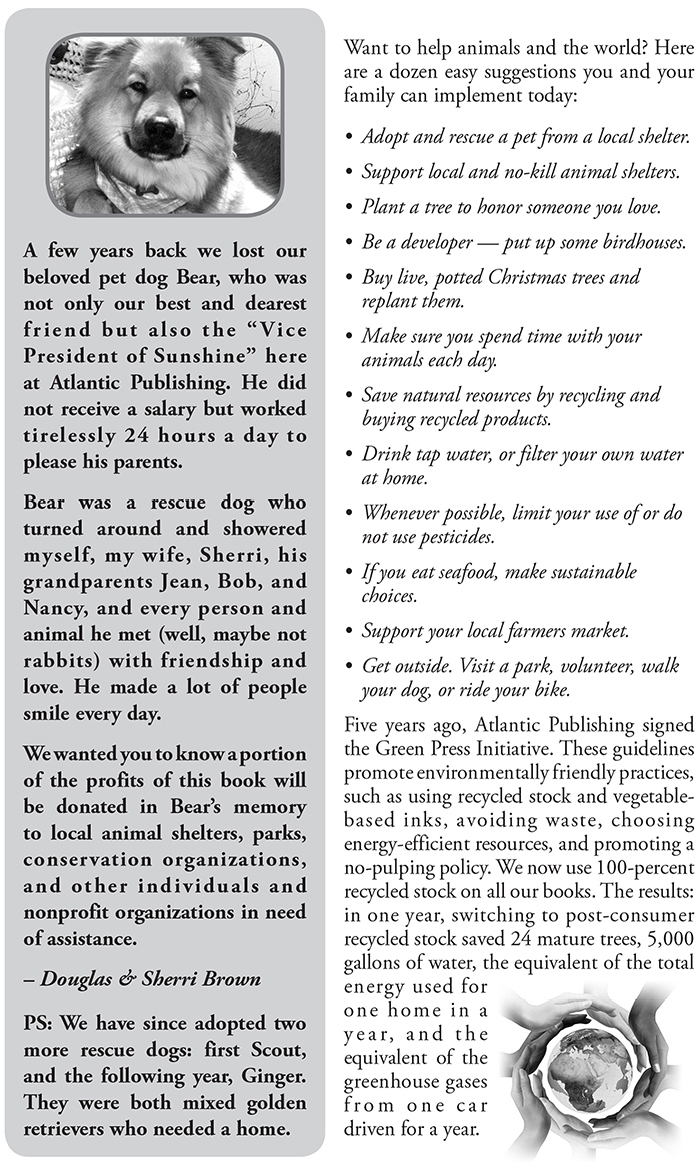
Table of Contents
Dedication
For Mark Fleischman for allowing me to work on this at times when we were slow. Your patience, guidance, and friendship is, and will always be, appreciated.
Introduction
If nature has made any one thing less susceptible than all others of exclusive property, it is the action of the thinking power called an idea, which an individual may exclusively possess as long as he keeps it to himself; but the moment it is divulged, it forces itself into the possession of every one, and the receiver cannot dispossess himself of it.
Thomas Jefferson noting how intellectual property is different from other kinds of property in a letter to Isaac McPherson, Monticello, August 13, 1813
So you have written a novel, designed a new invention, or created a super logo to be the face of your company. Now what? You have taken the first step in ensuring that your ideas are protected: investing in this book protects inventions and logos. You will want to read the entire book since several areas overlap and because protecting your products, writing, and creations is good business. Copyrights, trademarks, and patents are considered intellectual property.
There are four fundamental forms of intellectual property that can be protected: patents, copyrights, trademarks, and trade secrets. Each form of intellectual property has a distinctive purpose in helping individuals and businesses protect their business assets. This book will explain the types of items that can be protected, the extent of the protection, the geographical areas where the protection extends, and the time the protection is made. This book is but one tool to be used on your path to copyright, patent, and trademark ownership.
Intellectual property law and policy are all about innovation, both encouraging it and protecting its fruits. However, these are potentially opposing, perhaps even incompatible, goals. If we reward one innovator with a monopoly over the fruits of the innovation, prohibiting others use of those fruits, we risk preventing the next round of innovation. The challenge to lawmakers is to strike an appropriate balance between reward and innovation by pitching the length of the monopoly at the right level, both in the breadth of its coverage and the length of its term, beyond which others might also use it. Intellectual property ownership includes any work of authorship entitled to protection under the copyright laws.
The legal system grants definite rights and defense for owners of property. The kind of property that results from the hard work of writers, inventors, and companies is called intellectual property. Rights and protections for owners of intellectual property are based on federal patent, trademark and copyright laws, and state trade secret laws. In general, patents protect inventions of tangible things, copyrights protect a variety of forms of written and artistic expression, and trademarks protect a name or symbol that ascertain the source of goods or services.
Why should your intellectual property be copyrighted, patented, or trademarked? The answer is for the commercial value, which stems from your ability to control and exploit its use. If you were unable to reap the rewards of the ownership of your ideas, they would not bring you any wealth. If Walt Disney had not taken a chance by making a full-length animated motion picture in 1937, there would be no Disney empire today. Despite being told that it was destined to fail, Disney made the feature film and, using copyright law, prevented others from taking his idea and reselling it. By using his ownership of the copyright of this film, he helped to create a monopoly on the animated film business for many years, ensuring the success of the Disney empire of today.

